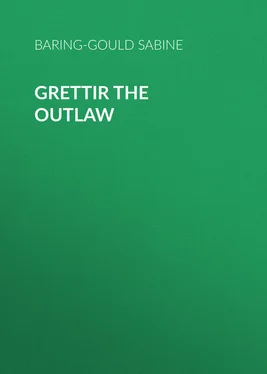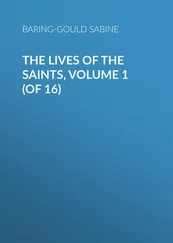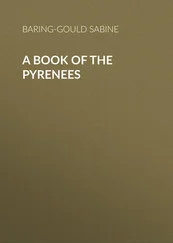Sabine Baring-Gould - Grettir the Outlaw
Здесь есть возможность читать онлайн «Sabine Baring-Gould - Grettir the Outlaw» — ознакомительный отрывок электронной книги совершенно бесплатно, а после прочтения отрывка купить полную версию. В некоторых случаях можно слушать аудио, скачать через торрент в формате fb2 и присутствует краткое содержание. Жанр: foreign_antique, foreign_prose, на английском языке. Описание произведения, (предисловие) а так же отзывы посетителей доступны на портале библиотеки ЛибКат.
- Название:Grettir the Outlaw
- Автор:
- Жанр:
- Год:неизвестен
- ISBN:нет данных
- Рейтинг книги:3 / 5. Голосов: 1
-
Избранное:Добавить в избранное
- Отзывы:
-
Ваша оценка:
- 60
- 1
- 2
- 3
- 4
- 5
Grettir the Outlaw: краткое содержание, описание и аннотация
Предлагаем к чтению аннотацию, описание, краткое содержание или предисловие (зависит от того, что написал сам автор книги «Grettir the Outlaw»). Если вы не нашли необходимую информацию о книге — напишите в комментариях, мы постараемся отыскать её.
Grettir the Outlaw — читать онлайн ознакомительный отрывок
Ниже представлен текст книги, разбитый по страницам. Система сохранения места последней прочитанной страницы, позволяет с удобством читать онлайн бесплатно книгу «Grettir the Outlaw», без необходимости каждый раз заново искать на чём Вы остановились. Поставьте закладку, и сможете в любой момент перейти на страницу, на которой закончили чтение.
Интервал:
Закладка:
S. Baring-Gould
Grettir the Outlaw / A Story of Iceland
CHAPTER I
WINTER TALES
The Birthplace of Grettir – The Peopling of Iceland – A History of Quarrels – Stories Round the Hearth – Biarg – The Great Blue Bay – The Boy Grettir – The Saga of Onund Treefoot – The Northern Pirates – The Fight with King Harald – Onund's Wound – After the Battle
It was night – drawing on to midnight – in summer, that I who write this book arrived at the little lonely farm of Biarg, on the Middle River, in the north of Iceland. It was night, near on midnight, and yet I could hardly call it night, for the sky overhead was full of light of the clearest amethyst, and every stock and stone was distinctly visible. Across the valley rose a rugged moor, and above its shoulder a snow-clad mountain, turned to rosy gold by the night sun. As I stood there watching the mist form on the cold river in the vale below, all at once I heard a strange sound like horns blowing far away in the sky, and looking up, I saw a train of swans flying from west to east, bathed in sunlight, their wings of silver, and their feathers as gold.
I had come all the way from England to see Biarg, for there was born, about the year A.D. 997, a man called Grettir, whose history I had read, and which interested me so much that I was resolved to see his native home, and the principal scenes where his stormy life was passed.
The landscape was the same as that on which Grettir's childish eyes had looked more than eight hundred and fifty years ago. The same outline of dreary moor, the same snowy ridge of mountain standing above it, catching the midnight summer sun, the same mist forming over the river; but the house was altogether different. Now there stood only a poor heap of farm-buildings, erected of turf and wood, where had once been a noble hall of wood, with carved gable-ends, surrounded by many out-houses.
Before we begin on the story of Grettir, it will be well to say a few words about its claim to be history.
Iceland never was, and it is not now, a much-peopled island. The farmhouses are for the most part far apart, and the farms are of very considerable extent, because, owing to the severity of the climate, very little pasturage is obtained over a wide extent of country for the sheep and cattle. The population lives round the coast, on the fiords or creeks of the sea, or on the rivers that flow into these fiords. The centre of the island is occupied by a vast waste of ice-covered mountain, and desert black as ink strewn with volcanic ash and sand, or else with a region of erupted lava that is impassable, because in cooling it has exploded, and forms a country of bristling spikes and gulfs and sharp edges, very much like the wreck of a huge ginger-beer bottle factory.
What are now farmhouses were the halls and mansions of families of noble descent. Indeed, the original settlers in Iceland were the nobles of Norway who left their native land to avoid the tyranny of Harold Fairhair, who tried to crush their power so as to make himself a despotic king in the land.
These Norse nobles came in their boats to Iceland, bringing with them their wives, children, their thralls or slaves, and their cattle; and they settled all round the coast. The present Icelanders are descended from these first colonists.
Now, the history of Iceland for a few hundred years consists of nothing but the history of the quarrels of these great families. Iceland was without any political organization, but it had an elected lawman or judge, and every year the heads of the families rode to Thingvalla, a plain in the south-west, where they brought their complaints, carried on their lawsuits, and had them settled by the judge. There was no army, no navy, no government in Iceland for a long time; also no foreign wars, and no internal revolutions.
These noble families settled in the valleys and upon the fiords thought a good deal of themselves, and they carefully preserved, at first orally then in writing, the record of their pedigrees, and also the tradition of the famous deeds of their great men.
In summer there is no night; in winter, no day. In winter there is little or nothing to be done but sit over the fire, sing songs, and tell yarns. Now, in winter the Icelanders told the tales of the brave men of old in their families, and so the tradition was handed on from father to son, the same stories told every winter, till all the particulars became well known. At the same time there can be no doubt that little embellishments were added, some exaggerations were indulged in, and here and there the grand deed of some other man was grafted into the story of the family hero. About two hundred or two hundred and fifty years after the death of Grettir, his history was committed to writing, and then it became fixed – nothing further was added to it, and we have his story after having travelled down over two hundred years as a tradition. That was plenty of time for additions and emendations, and the hobgoblin and ghost stories that come into his life are some of these embellishments. But the main facts of his life are true history. We are able to decide this by comparing his story with those of other families in the same part of the island, and to see whether they agree as to dates, and as to the circumstances narrated in them.
In the north-west of Iceland is an immense bay called the Huna-floi, which branches off into several creeks, the largest of which is called the Ramsfirth, and the next to that is the Middlefiord. Into this flows a river that has its rise in the central desert, in a perfect tangle of lakes. Three rivers issuing from these lakes unite just above Biarg, and pour their waters a short morning's ride lower through sands into the Middlefirth.
The valley is not cheerful, running from north to south. Biarg lies on the east side, and faces the western sun. The moor which lies behind it, and forms the hill on the other side of the river, is not broken and picturesque, and if it were not for the peak of Burfell, covered with snow a good part of the year, the view from Biarg would be as uninteresting as any to be found in the land. But then, when one rides down to the coast, or ascends the moor, what a splendid view bursts on the sight! The great Polar Sea is before one, intensely blue, not with the deep ultramarine of the Mediterranean, but with the blue of the nemophyla or forget-me-not, rolling in from the mysterious North; and across the mighty bay of the Huna-floi can be seen the snowy mountains of that extraordinary peninsula which runs out to the north-west of Iceland, and is only just not converted into an island because connected with Iceland by a narrow strip of land. That great projection is like a hand with fiords between the fingers of land, and glacier-mountains where are the knuckles; but the wrist is very narrow indeed, only about one English mile across, and there lies a trough along this junction, with a little stream and a lake in it. Now, at this wrist, as we may call it, lies the farm of Eyre, where, somewhat later, lived the sister of Grettir, who married a man that farmed there, named Glum.
Looking away across the great blue bay, the mountains of the hand may be seen rising out of the sea, and looking like icebergs.
Grettir the Strong was the son of a well-to-do bonder, or yeoman, who lived at Biarg, and was descended from some of the great nobles of Norway. His father's name was Asmund with the Grey-head, and his mother's name was Asdis.
He had a brother called Atli, a gentle, kindly young fellow, who never wittingly quarrelled with anyone, and was liked by all with whom he had to do. He had also two sisters – one was called Thordis, and she was married to Glum of Eyre – but neither come into the story; and he had another sister called Rannveig, who was married to Gamli of Melar, at the head of Ramsfirth. He had also a little brother called Illugi, of whom more hereafter. Grettir was not a good-looking boy; he had reddish hair, a pale face full of freckles, and light blue eyes. He was broad-built, not tall as a boy, though in the end he grew to be a very big man.
Читать дальшеИнтервал:
Закладка:
Похожие книги на «Grettir the Outlaw»
Представляем Вашему вниманию похожие книги на «Grettir the Outlaw» списком для выбора. Мы отобрали схожую по названию и смыслу литературу в надежде предоставить читателям больше вариантов отыскать новые, интересные, ещё непрочитанные произведения.
Обсуждение, отзывы о книге «Grettir the Outlaw» и просто собственные мнения читателей. Оставьте ваши комментарии, напишите, что Вы думаете о произведении, его смысле или главных героях. Укажите что конкретно понравилось, а что нет, и почему Вы так считаете.












